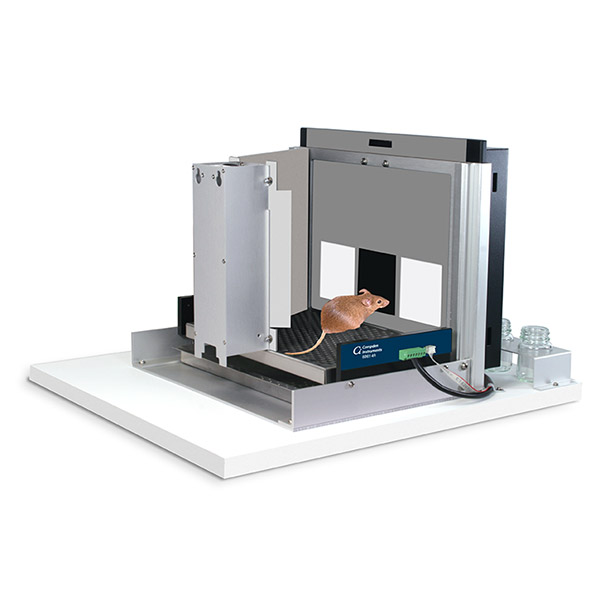
Designed to measure sensitivity to valence (i.e. positive and negative) feedback information, PRL is sensitive to serotonergic manipulations, suggesting this test may be used to study depression-relevant behaviour in rodents
Wilkinson, M. P., Grogan, J. P., Mellor, J. R., & Robinson, E. S. J. (2020). Comparison of conventional and rapid-acting antidepressants in a rodent probabilistic reversal learning task. Brain and Neuroscience Advances, 4, 239821282090717. - Abstract
Phillips, B. U., Dewan, S., Nilsson, S. R. O., Robbins, T. W., Heath, C. J., Saksida, L. M., Bussey, T. J., & Alsi?, J. (2018). Selective effects of 5-HT2C receptor modulation on performance of a novel valence-probe visual discrimination task and probabilistic reversal learning in mice. Psychopharmacology, 235(7), 2101?2111. - Abstract
Second Generation Bussey Chamber developed for mice with Intelli-interface supports up to 20 chambers on one PC. On the strength of 10 years of feedback and development, the system is even more flexible and with more features.
